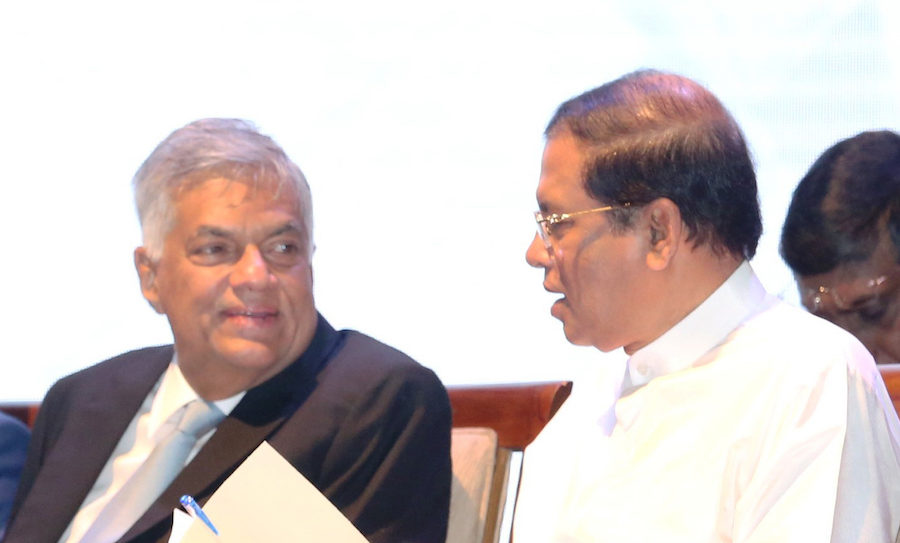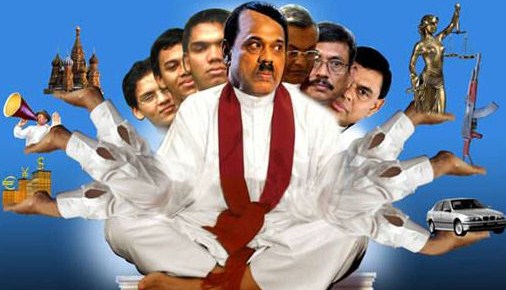A Brief Colonial History Of Ceylon(SriLanka)
Sri Lanka: One Island Two Nations
A Brief Colonial History Of Ceylon(SriLanka)
Sri Lanka: One Island Two Nations
(Full Story)
Search This Blog
Back to 500BC.
==========================
Thiranjala Weerasinghe sj.- One Island Two Nations
?????????????????????????????????????????????????Saturday, April 14, 2018
President Is Powerless To Remove The Prime Minister

 Some
commentators have persistently advanced the proposition that,
notwithstanding the Nineteenth Amendment to the Constitution, the
President’s power to remove the Prime Minister is intact. It is a view
that relies on a literal reading of the Sinhala text of Article 48(1) in
which the phrase “removal from office” appears.
Some
commentators have persistently advanced the proposition that,
notwithstanding the Nineteenth Amendment to the Constitution, the
President’s power to remove the Prime Minister is intact. It is a view
that relies on a literal reading of the Sinhala text of Article 48(1) in
which the phrase “removal from office” appears.
I
have, in my previous intervention on this subject, analysed the
provisions of the Constitution as amended by the Nineteenth Amendment
and expressed the view that the President no longer has this power. That
interpretation has been questioned on the basis that the words “removal
from office” appear in the Sinhala text of Article 48(1); and because
the Sinhala text should prevail in the event of an inconsistency, it
must follow that the President may remove the Prime Minister.
I disagree with this conclusion for the reasons I have given below.
Tenure of Prime Minister’s office pre-Nineteenth Amendment
The
Constitution as enacted in 1978, (which I shall hereafter refer to as
‘the Principal Enactment’), in Article 47, provided for the tenure of
the office of the Prime Minister. It stated that he “shall continue to
hold office throughout the period during which the Cabinet of Minister
continues to function under the provisions of the Constitution unless he
a) is removed by the President;
b) resigns his office; or
c) ceases to be a Member of Parliament.”
The Prime Minister shall continue
to remain in his office unless and until any one of the three events
mentioned above occured, whereupon he would cease to hold office. This
provision was repealed by the Nineteenth Amendment which was enacted in
May 2015.
President surrendered his power to dismiss the PM
The
Nineteenth Amendment somewhat drastically curtailed the President’s
powers and reconfigured the power relationship between the President, on
the one hand, and Parliament and Prime Minister on the other. President
Sirisena himself adumbrated the overall objective of the Nineteenth
Amendment in the course of a speech he delivered on 23 April, 2015, when he said:
“In
order to build a democratic and civilized society, it is necessary to
prevent the emergence of dictatorship and taking control of state power,
state assets, the judiciary, parliament and all of this to one’s own
control that comes from the Executive Presidential system.
This
should be immediately changed. I have worked towards this in the past
three months. I am not aware of any leader in the world who had obtained
an office with all these powers but has been as flexible in trying to
get rid of those powers that had been bestowed on such a leader.
The
Attorney General informed the Supreme Court that in keeping with my
advice these powers should be removed. My Constitutional Adviser also
informed the Supreme Court that these powers should be removed. We took a
political decision on this. The Supreme Court has given a decision on
this.”
By
the Nineteenth Amendment, the President surrendered not only the power
he possessed to summarily dissolve Parliament at any time but also his
power to dismiss the Prime Minister. The Nineteenth Amendment was seen
as the first step in the process of enacting a new constitution to give
effect to the mandate given by the people, an important element of which
is the curtailment if not the abolition of the executive presidency. It
was designed to insulate both Parliament and Prime Minister from the
vagaries of Presidential whim. This commitment that has been built into
the Nineteenth Amendment can neither be reversed nor nullified by an
expansive reading of the President’s powers.
In
the Nineteenth Amendment, the provision relating to Prime Minister’s
tenure is located in Article 46(2). Article 46(2) reflects Parliament’s
intention to withdraw from the President the power to remove the Prime
Minister. It reproduces the corresponding provision from the principal
enactment but without clause (a). Accordingly, the Prime Minister shall
hold office unless


